Go Slow to Go Far
A Bears Ears 50 race report plus other updates
Next week, I’m going on vacation, for real! This means I’ll skip next Wednesday’s newsletter and be back with a post July 9, which likely will feature some Hardrock Hundred preview. I haven’t taken a real break from email and obligations since a trip last December. I’ll use next week for a quick getaway with my husband to celebrate our 35th (!) wedding anniversary, followed by trail time, house projects, and restful reading while tapering for Hardrock. Hello, summer! Read on for a race report and some shorts.
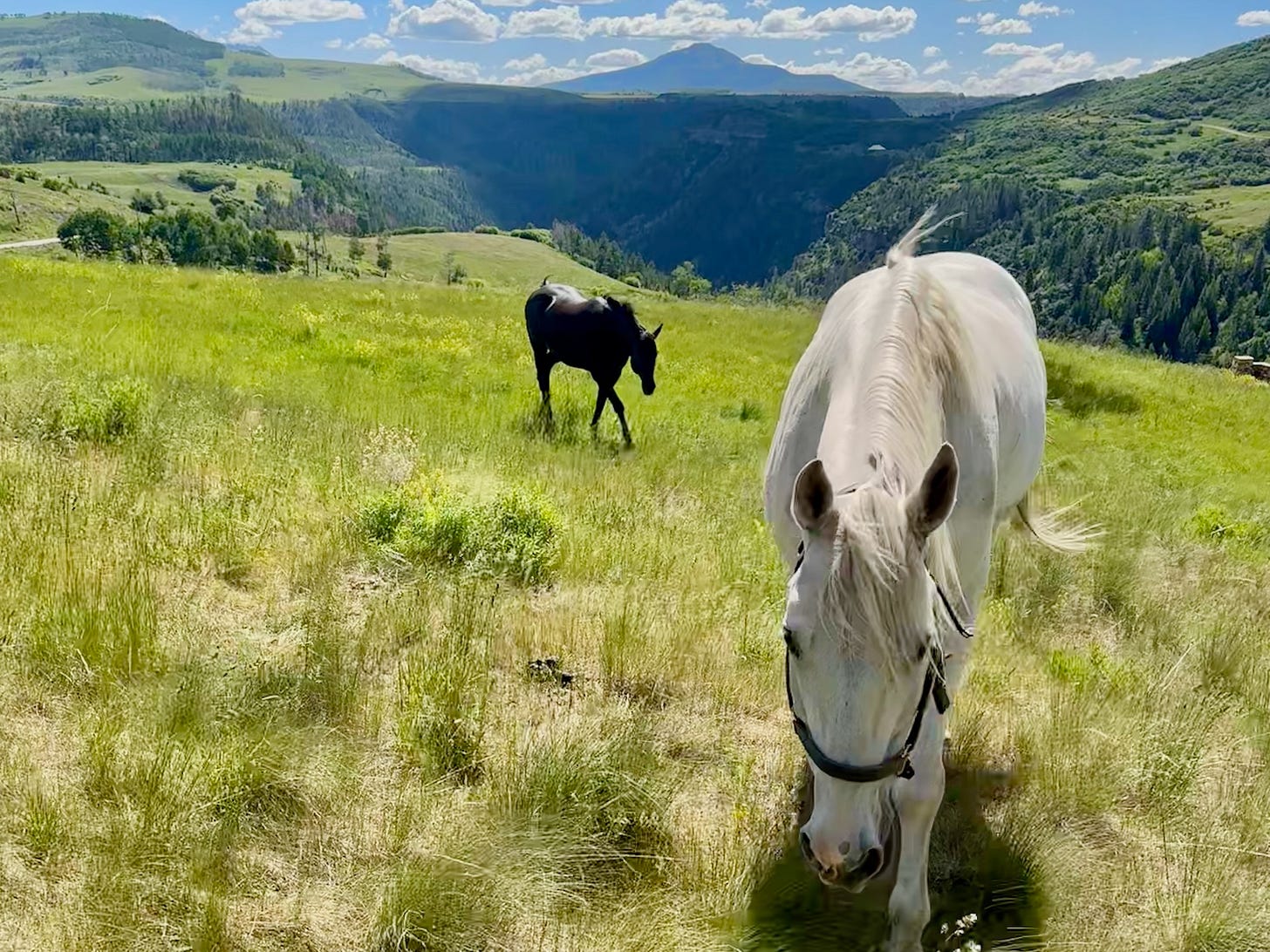
Windblown while trees groan
I spent last Saturday a couple of hours east of where I live, in the Abajo Mountains next to Monticello, Utah, for the Bears Ears 50 ultra—a final extra-long peak training run before the Hardrock Hundred on July 11.
I find it particularly satisfying and even comforting to return to an ultra I previously ran, knowing the route and the way to the start line, and this ultra is one of my favorites. It takes place on an aspen- and pine-covered mountain range, at about 7700 to 10,600 feet elevation (relatively short compared to nearby ranges, hence its name Abajo meaning “below”) wedged between the high-desert landscapes of Canyonlands National Park and Bears Ears National Monument. On one stretch of the 50-mile loop, we could see the buttes in the distance shaped like bears ears that give the sacred landscape—which is full of Ancestral Puebloan dwellings and petroglyphs—its name.
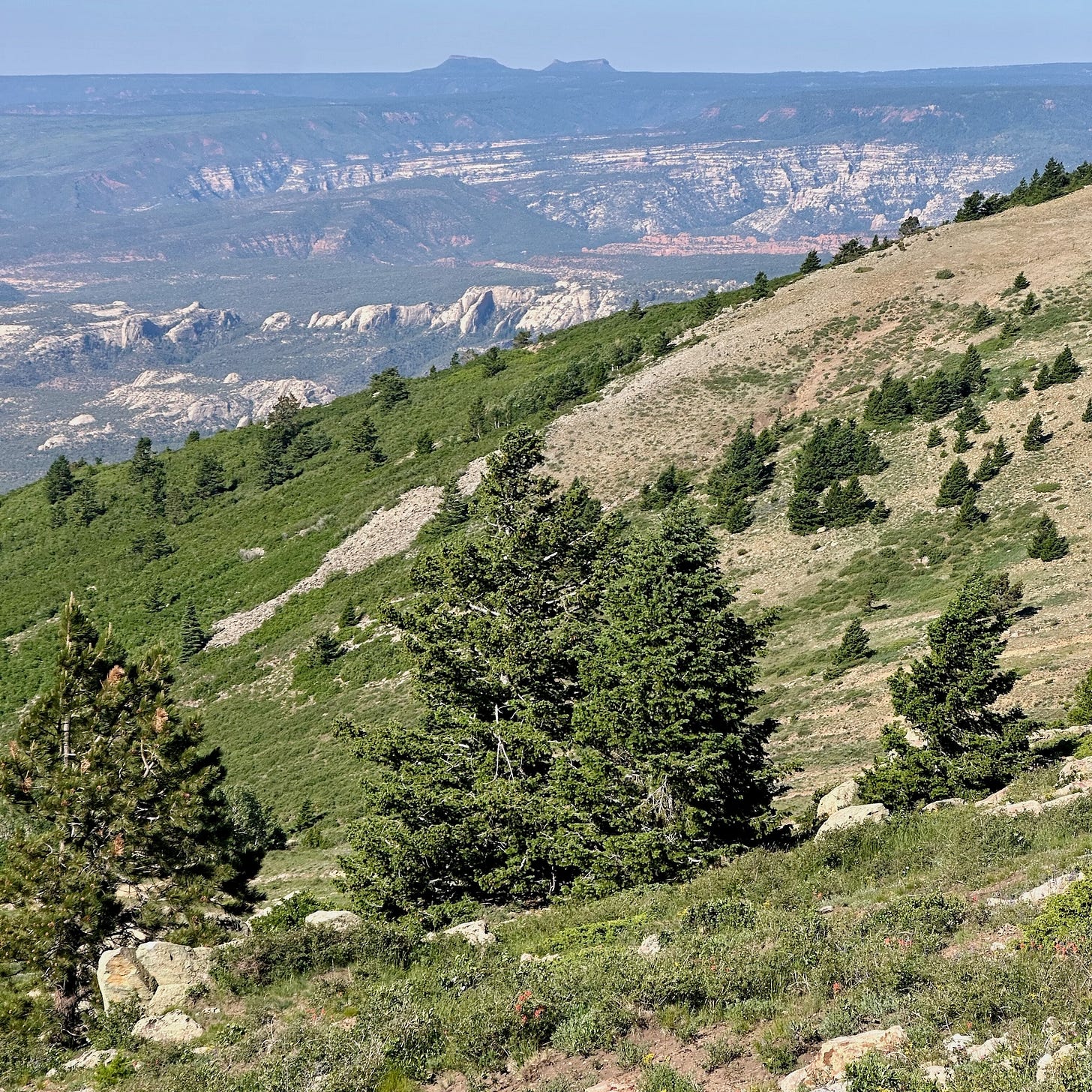
I first ran this 50-miler in 2021, then again last year, but last year its course was modified and shortened due to storm damage. I felt eager to experience the full big loop of the 50-miler again, but my memory of its toughest section had become hazy and somewhat exaggerated, like a fishing story in which the fish gets bigger with each retelling. I braced myself for what I remembered as an extremely gnarly, dry, hot, and jagged middle section.
Sitting in my trusty, dusty Subaru waiting for the 5 a.m. start, I quickly tapped out goals for the day on my Notes app to remind myself this was not a competitive race for me; it was a dress rehearsal for Hardrock. I needed to practice the things that would prime me for success at the monumentally difficult and slow-going Hardrock 100-miler in three weeks. I needed to be OK with being slower than I was when I did this full course in 2021. So I wrote and reminded myself throughout the day:
Stay positive, relaxed.
Take care of myself along the way. Fuel at least 50-60g carbs/hr on the trail plus eat more at aid stations. At least one bottle/hr with ~500mg sodium.
Take time to stay cool by getting wet at streams.
Run what I can, and finish running on the road, but make peace with hiking the rough stuff.
Don’t trip and fall or turn an ankle. Don’t get hurt!
Be nice. Encourage others.
Finish feeling OK, like I could keep going.
Be smart and alert, don’t space out.
Do my own thing, don’t race and chase.
Take photos. Notice details.
Practice max enthusiasm. Think of the windstorm as invigorating, not annoying.
Expect the fatigue and frustration. Move through it.
Finish!! Especially since I DNFed Quad Rock 50 at mile 43 due to sprained ankle.
To cut to the chase: I nailed every one of those goals! But oh, my goodness, the day tested me and others.

In the first mile, as we ran a dirt and gravel road toward the trailhead in darkness, we got body-slammed by an extreme windstorm that would test us all day. Dust-devils formed and swirled, then hit us in the face, making my nose run and eyes water. I felt grateful I needed to wear prescription sports glasses to correct my vision because they functioned like goggles and protected my eyes.
Since it was the solstice, daybreak came early, and after an easy five-mile warmup on a road, we hit singletrack trail and ascended through typical sagebrush and piñon-juniper to the day’s first summit. This is one of my favorite high points of the course because columbine grow in thick clumps among the aspen.
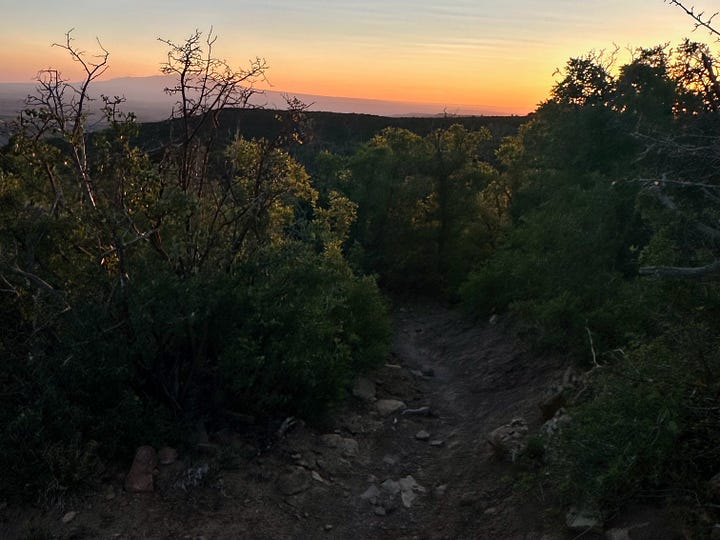
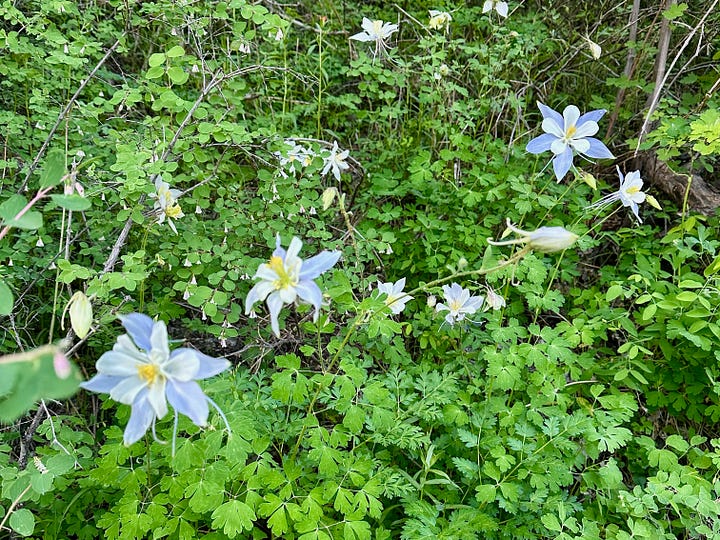
My legs felt fresh, the climb felt pleasantly manageable, and I could sense that I was in better shape compared to a year ago when I ran this while training for the Grand to Grand Ultra and my knee ached. This time, no knee ache. How amazing, I thought, that the injury that stopped me for three months last November through January truly healed. We actually can get better.
When the vegetation thinned out, the wind hit stronger. I gazed at a stand of aspens that grew curved rather than straight, presumably from the chronic wind, and reminded myself to bend not break. I vowed to work with the wind, not fight it.
I loved the purpose of the day. I loved the company of the other runners with whom I chatted. I didn’t quite love the aid stations, which featured only fruit and packaged snacks and not the PB&Js or potatoes I craved, but that’s OK, I loved the volunteers. I loved the abundant streams that gave me reason to pause, dip my bandana in the water, and use it to dampen my sun-protection sleeves, neck, and legs. I loved the USFS land and BLM national monument through which we ran and vowed to continue my advocacy to protect it and fight its selloff. I loved being offline and taking a break from bad news. (I would find out later that night that the gang who can’t get their story straight had bypassed Congress to bomb and enter into yet another unwinnable conflict in the Middle East. Ugh, the stupidity.)
All of that positivity helped me cope with the relentless—at times borderline violent—wind, which grew hair-dryer hot. I saw the race director at the mile 22 aid station and casually mentioned to him my deep suppressed fear of fire breaking out in these conditions and us runners getting trapped. I tried not to think of the Australian woman who got trapped and burned in the outback while running an ultra, but I did.
“People cause fires, and nobody else is back here,” he reassured me. “This is so remote, we’re the only ones around.”
True. Turns out, the real danger was something else—the trees.
After mile 22, the 50-mile runners—now separate from the 50K runners, who ran a different shorter loop midway—plunged down to a canyon that sparked my memories from this section of 2021. It was as challenging as I remembered it: a series of downs and ups like Chutes and Ladders on a rugged trail barely visible because Gambel oak—an oak-shrub species—grew so thick and abundant, it clogged and hid the trail, and numerous blown-down trunks and branches made us pause to pick our way through their wreckage.
Meanwhile, still-standing trees endlessly groaned and squeaked overhead in the wind, as if the whole forest were moaning and crying. I realized that any one of them could snap and fall. I ignored my desire to listen to music, because I needed to keep my ears open and on high alert in case a branch fell near me. I felt vulnerable that whole time in that canyon, but I tried to keep my cool and mostly succeeded. I knew that coping with threatening conditions was good practice for Hardrock.
When we finally began a sharp climb out of the canyon, I felt relieved. I passed several runners here who were dehydrating and overheating. No one could run uphill on these rocks in this heat, which felt in the 90s at least. My trudge was barely faster than the snail’s pace of others. Our pace slowed to about 30 minutes per mile. “This is a Hardrock-like mile,” I thought inwardly, appreciating the training.
At the aid station around mile 34, several runners dropped out due to nausea or other problems. I took extra time to cool off in the nearby stream and to eat. I was in no hurry; it felt liberating not to care about my time, to care only that I finish the race feeling uninjured and able to run the final runnable stretches. Which I did.
Just after 14 hours, at around 48 miles (the course measures a bit short), I crossed the finish line relieved to be done—to take shelter from the nonstop wind—but feeling pretty A-OK. I hadn’t hurt myself. I hadn’t puked or burned in the windy heat, nor had I been squashed like a bug by a tree. I celebrated that I peed regularly all day long and did not develop puffy fingers, which indicates I finally got my hydration and electrolytes right. I didn’t feel starving or depleted. I just felt normally tired and sore. Victory!
My time was an hour and a half slower than when I did this full route in 2021, and although I reflexively winced at that reality, I also congratulated myself on taking the time I needed to manage fueling, hydration, thermoregulation, and my mental state—all the things that will need careful management in the 100-miler in three weeks.
My average pace, with all the slow hiking and rest stops at aid stations factored in, was 17:50/mile, which is still significantly faster than I hope to average in Hardrock, where 3mph or 20 minutes/mile is considered “fast” and makes for a 34-hour finish time. I expect Hardrock to take me at least 40 hours, perhaps closer to the cutoff of 48 hours.
Sometimes, we ultrarunners need to train to go slower, rather than faster, to go far. I’m getting better at making peace with slowing down to make it all the way.
The threat isn’t over
Last week, I shared the dismaying news that public land all around us, and throughout the West, could be sold for privatization and development—news that triggered outcry across the political spectrum. Yesterday, I felt inspired and relieved when news broke that a Senate parliamentarian ruled that Utah Sen. Mike Lee’s amendment to sell off millions of acres of USFS and BLM public land can’t be a part of the budget reconciliation. Lee then pledged to drop USFS land sale and reduce the BLM land for sale. But the threat isn’t over.
Running through a small part of Bears Ears last weekend—whose boundaries Trump vows to shrink, as he did in his first term—and admiring vistas of Canyonlands National Park in the distance enhanced my already deep appreciation for these wilderness areas. We tend to notice and care more for that which is threatened. I never took our forestland and open spaces for granted, but more than ever I’m aware of the need to help steward them (rather than carve them up with roads for uses like mining, drilling, or housing) for future generations, for biodiversity, for climate resilience, for recreation and trail access, and for so many other reasons.
With that in mind, I paused on my trip home to walk around part of the Canyons of the Ancients National Monument near Cortez. The visitor center was closed on a Sunday, but I could stroll around the area and learn from the interpretive signage, and a helpful volunteer guide greeted me and others and passed out brochures.
I felt captivated and enlightened by this quiet, uncrowded natural outdoor museum, and I bemoaned the fact that our current leader wants to dismantle places like this and erase history associated with them. He wants to scrap the Antiquities Act that has given presidents since Teddy Roosevelt the power to conserve special places like this. (Grand Canyon National Park, for example, began as a national monument under declaration by Roosevelt in 1908, using the Antiquities Act.)
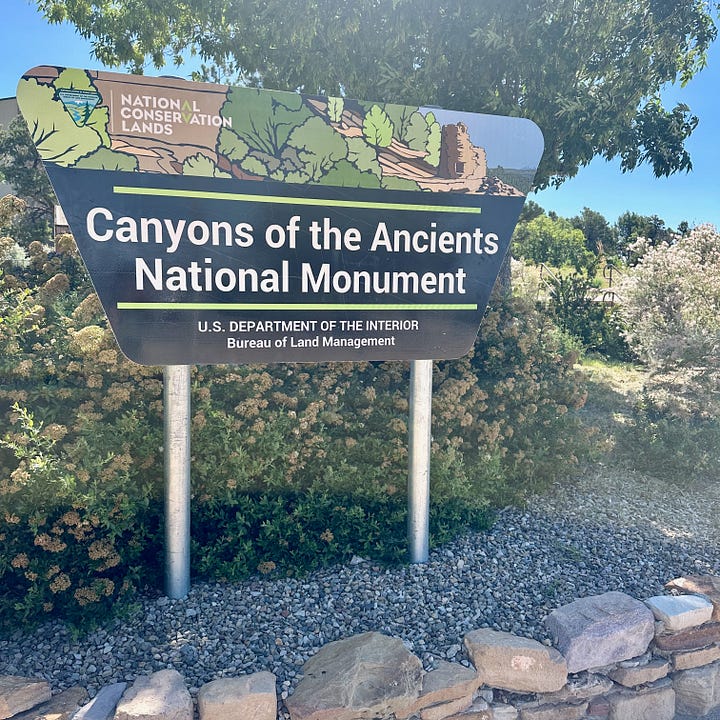
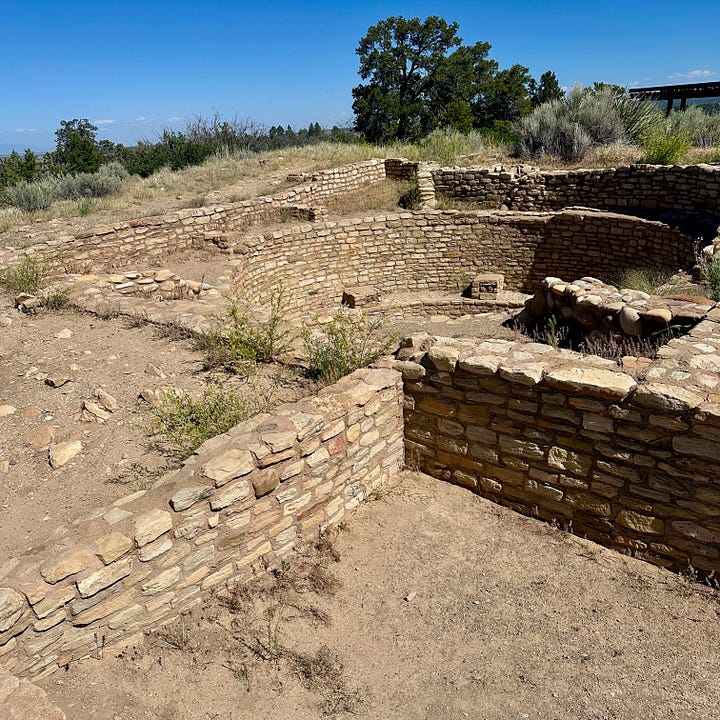
I’ve written before about what “national monuments” are, why they’re valuable to safeguard sensitive environmental and cultural or historical areas, and how they differ from national parks. To learn more, visit and support the Conservation Lands Foundation, which advocates to protect them.
Finally, on this topic, I highly recommend a new book by
called “The Enduring Wild: A Journey Into California’s Public Lands,” which tours remote BLM land in the Golden State. Don’t let the fact that it’s California-centric turn you off if you live in another state. It’s beautifully written and interesting even if you never plan to visit those areas. Josh’s narratives transport you and will make you care more about the enduring wild closer to wherever you live. Buy it here and read about it in his recent newsletter:I got lots of people to take a hike
I’m proud that a four-week community hikeathon I launched turned into a big success. It ends this weekend, and the 80+ participants have raised some $20,000 for the service organization I lead, Telluride Rotary Club, with a portion of donations also going to several nonprofits that hikeathon teams represent.
Some people got really into it! One woman, for example, embarked on a daily streak and hiked over 200 miles since June 1, much more than she ever imagined she would (as seen in this Instagram post). In the process, she raised money for our club and for a nonprofit dedicated to brain cancer research.
Some teams enthusiastically raised money both for our Rotary Club and for local environmental groups, the local schools’ educational foundation, and other nonprofits.
I did not hit my goal of raising $2000 for it, so if you’d like to support me in the final days of this campaign with a small donation (before the end of day Saturday), I’d really appreciate it! The donation is tax-deductible and supports the service projects, scholarships, and youth exchange program that our club runs. Learn more and donate here, thank you!
All eyes on Western States
If you become glued to the Western States Endurance Run coverage this Saturday (follow along here and here), you might enjoy this archived post for context:
All the commentary tends to focus on the front-runners, but I’ll be following runners and their stories from the midpack; for example, Jamil Coury, given his self-described late and limited training; my friend’s daughter Zoe Ray, whom I’ve known since she was born; and the six over-70 runners. Check out AJW’s column on intriguing storylines for more info.

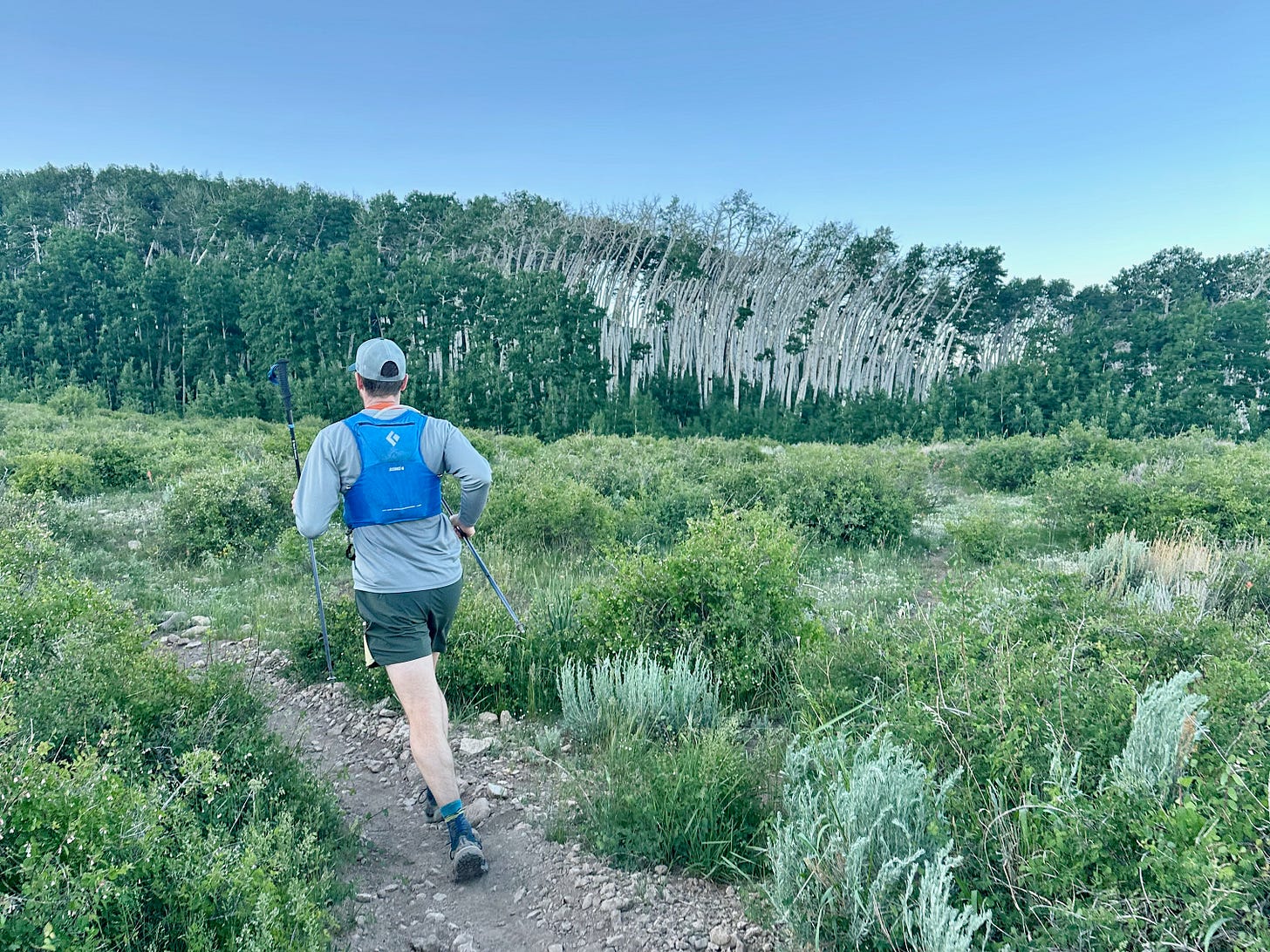
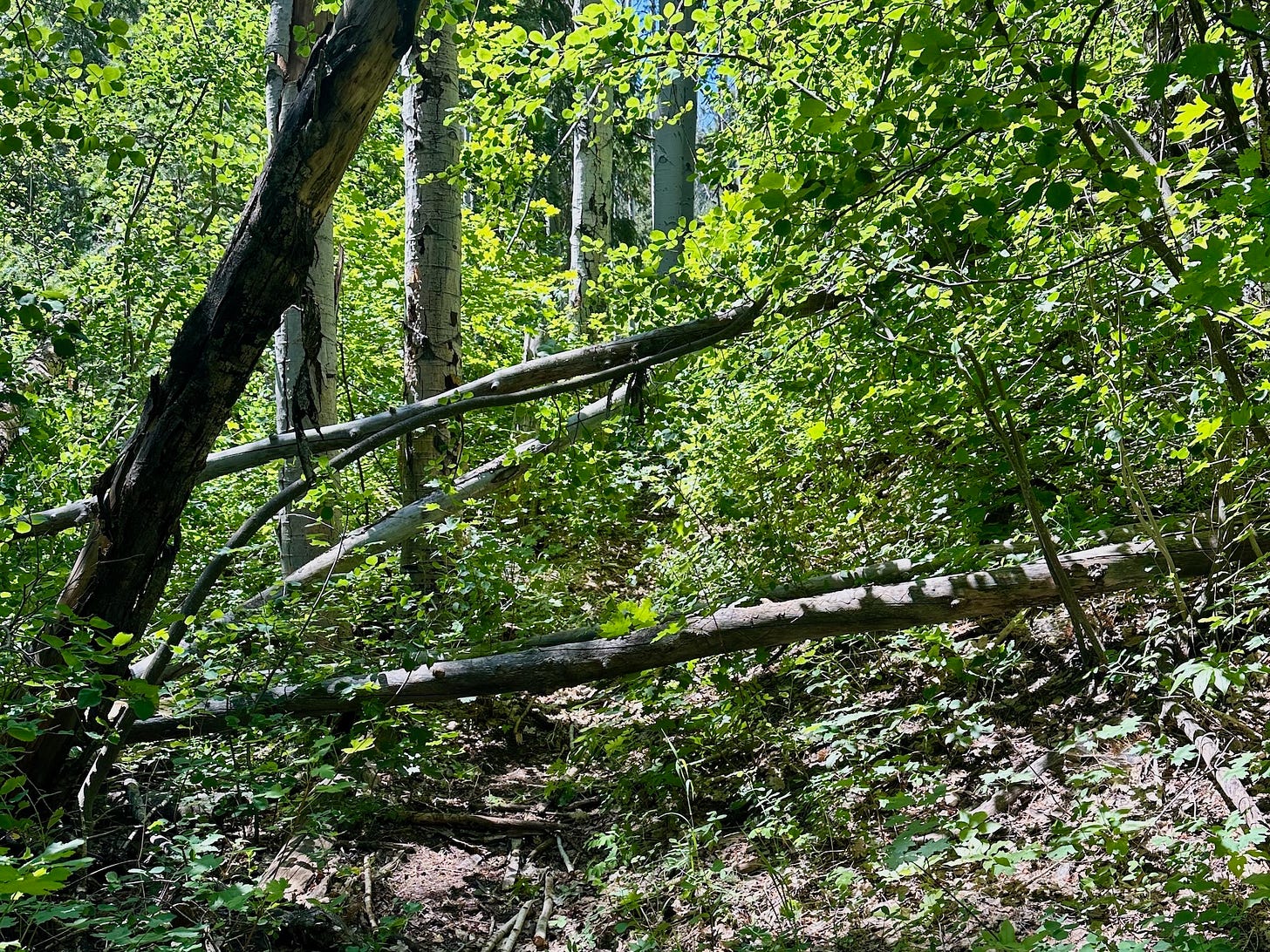
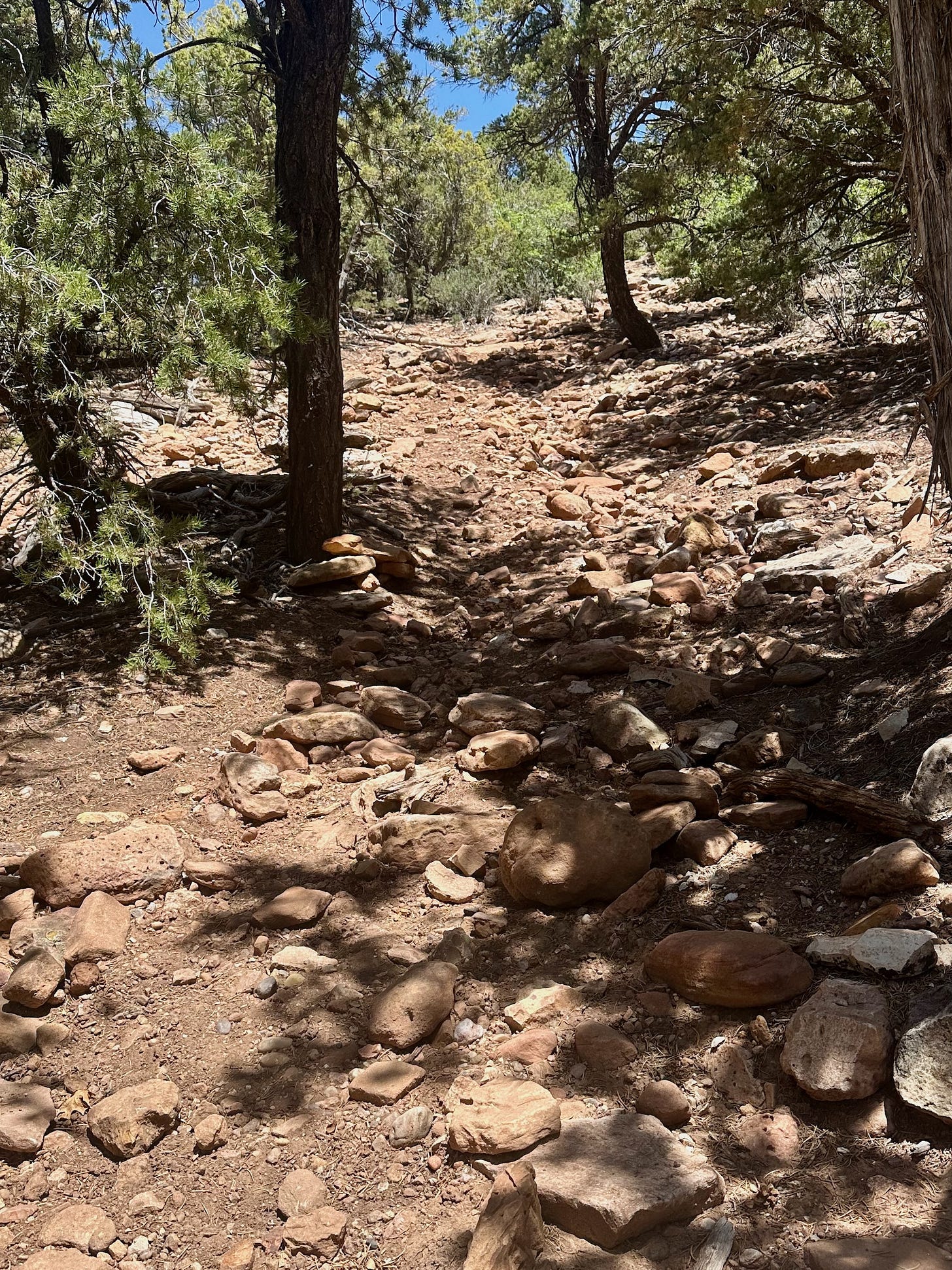
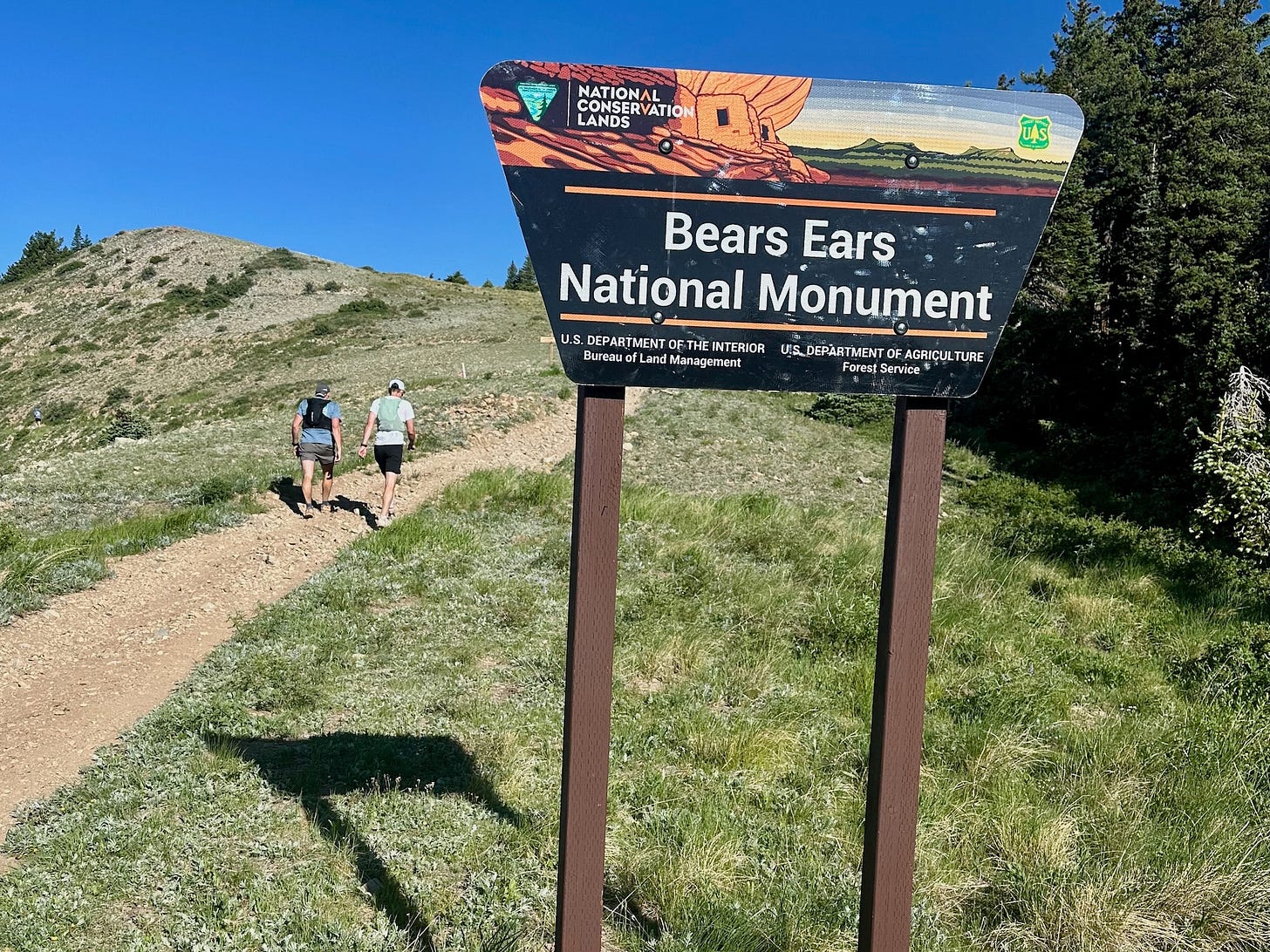



Great race and photos, Sarah. What a beautiful area! I hope to visit it soon.
Thanks for the shout out Sarah. Really means a lot coming from you!!